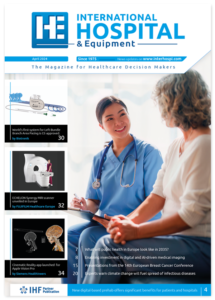Heater-cooler devices blamed for global mycobacterium chimaera outbreak
A global outbreak of Mycobacterium chimaera, an invasive, slow-growing bacterium, is linked to heater-cooler devices (HCD) used in cardiac surgery, according to a study. This study adds interim guidance to recent field reports on the outbreak, providing precautionary recommendations to hospitals and health systems to reduce the risk of infections.
‘It is surprising that a global outbreak like this could go unnoticed for years. This dangerous infection has put many patients at risk all over the world,’ said Rami Sommerstein, MD, of Inselspital, Bern University Hospital in Switzerland, the lead author of the study. ‘Now that we know HCDs are the source, individual action from the different players (healthcare institutions, manufacturers, etc.) is needed to contain the ongoing patient risk. The most important action a hospital can take is to remove contaminated HCDs from the operating room and other critical areas. That is the only way to ensure that patients are protected from this infection moving forward.’
HCDs are stand-alone devices needed for heat exchange in heart-lung machines used in some 250,000 surgeries annually in the U.S., according to the Centers for Disease Control and Prevention. In response to an increasing number of infections, investigators looked into hospital water sources and found M. chimaera in HCD water circuits – specifically, in the LivaNova 3T HCD used in most hospitals around the world. They also found the bacteria in air samples during surgeries with LivaNova HCDs, suggesting transmission through air particles.
To prevent future cases of invasive M. chimaera infections, the researchers made the following recommendations for hospitals and health systems, as well as public health authorities, based on their personal experience with the outbreak:
Ensure strict separation of contaminated HCDs from air of critical medical areas
Educate clinicians on the risks for and dangers associated with M. chimaera
Screen patients who had open heart surgery, heart transplantation or those who were exposed to ventricular assist devices and demonstrate prolonged and unexplained fevers.
M. chimaera is a non-tuberculous mycobacterium that was previously known to cause lung infections. Invasive M. chimaera in cardiac surgery patients is particularly difficult to treat because it requires surgery and prolonged antibiotic therapy.
‘While our understanding of the causes and the extent of the M. chimaera outbreak is growing, several aspects of patient management, device handling and risk mitigation still require clarification,’ said Sommerstein.
Society for Healthcare Epidemiology of America www.shea-online.org/journal-news/press-room/press-release-archives/497-heater-cooler-devices-blamed-for-global-mycobacterium-chimaera-outbreak

